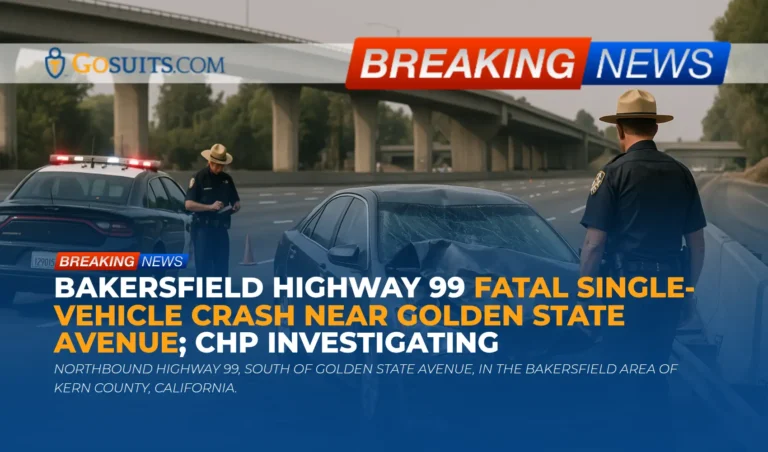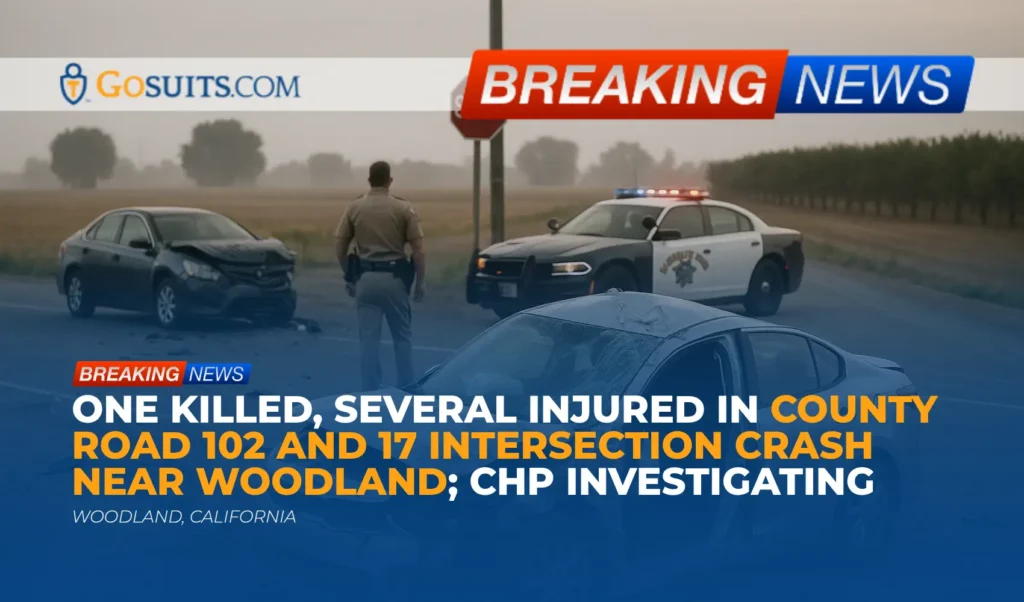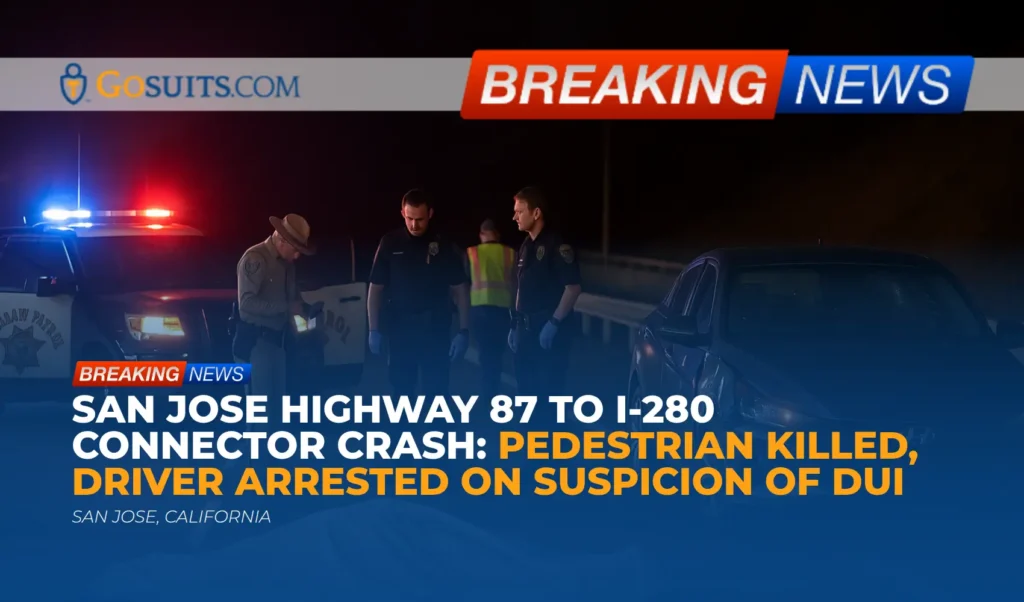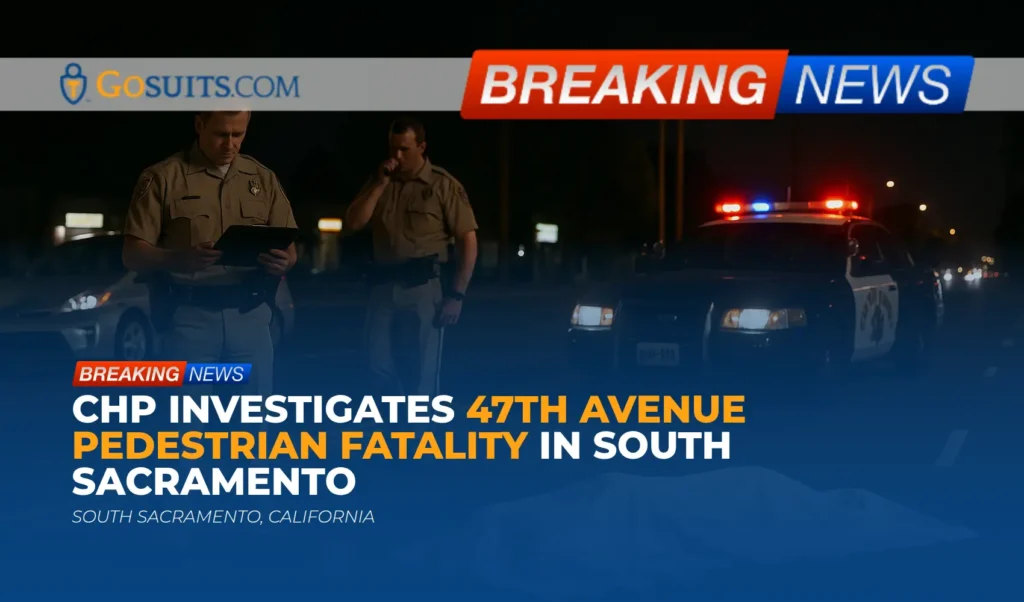- Summary of the Highway 99 incident near Bakersfield
- What we know so far from officials
- What investigations typically examine in single-vehicle fatalities
- Roadway departure and guardrails: how they work and why they matter
- Potential civil liability pathways in a single-vehicle fatal crash
- Practical first steps families often take in the days and weeks after a crash
- Where to get official records and assistance
- Insurance considerations after a single-vehicle crash
- Time limits and notice requirements in California
- Safety context for roadway departures in the United States
- Emotional support and community resources
- Why taking action now matters
- Commentary from Gosuits Bakersfield, California Personal Injury Attorney
Summary of the Highway 99 incident near Bakersfield
According to information released by law enforcement and the county coroner, a fatal single-vehicle crash occurred on northbound Highway 99 just south of Golden State Avenue in the Bakersfield area on Friday, October 17, 2025, at approximately 9:56 a.m. The Kern County Coroner’s Office publicly identified the driver as a 23-year-old man from McFarland. Officials stated he was driving a gray 2012 Toyota Camry on northbound Highway 99 when, for reasons still under investigation, the vehicle veered toward a northeasterly direction, left the east roadway edge, struck a metal guardrail on the east shoulder, then traveled out of control toward the northwest and collided with the center divider wall, where it came to rest. He sustained severe injuries and was pronounced deceased at the scene. The California Highway Patrol reported that it is unknown whether alcohol or drugs were factors.
We share this summary with care and respect for those affected. The details below address common questions families often have after a roadway departure crash, and explain how official investigations proceed, what records may be available, and how civil claims are typically analyzed in California.
What we know so far from officials
Based on the public statements:
- Location: Northbound Highway 99, south of Golden State Avenue, in the Bakersfield area of Kern County, California.
- Date and time: Friday, October 17, 2025, approximately 9:56 a.m.
- Vehicles involved: One vehicle, a gray 2012 Toyota Camry.
- Sequence described: The car veered off the east side of the roadway, struck a metal guardrail, then traveled across and struck the center divider.
- Injuries: The driver sustained fatal injuries and was pronounced deceased at the scene.
- Impairment status: Alcohol or drug involvement is unknown at this time.
- Investigation: The California Highway Patrol is conducting a crash investigation. The Kern County Coroner’s Office completed identification and will manage cause and manner of death determinations and associated records for next of kin.
No additional verified information on causal factors has been released. Determinations about contributing causes, if any, usually follow evidence collection, collision reconstruction, and review of medical and vehicle data.
What investigations typically examine in single-vehicle fatalities
When a serious crash involves a single vehicle, investigators usually consider a broad set of potential factors. The specific findings in any case depend on physical evidence and the official reconstruction, but the following categories are commonly examined:
- Roadway factors: Lane and shoulder conditions, signage, lighting, visibility, pavement markings, surface contaminants, potholes or edge drop-offs, work zones, and the presence and condition of roadside hardware such as guardrails and barriers. Public entities maintain many of these elements and typically document inspection and maintenance practices.
- Vehicle condition and performance: Brake function, steering and suspension components, tires and wheels, lights, airbags, event data recorder information, and any prior recalls or technical service bulletins. Safety investigators often check for open recalls using manufacturer records or public databases.
- Collision dynamics: Skid or yaw marks, impact points, crush patterns, debris fields, and final rest positions to determine speed estimates, travel directions, and sequence of impacts.
- Human factors: Driver medical conditions, fatigue, distraction, and situational awareness. Toxicology results can take time and are typically reported later by the coroner.
- Environment: Weather, sun glare, time of day, and traffic conditions immediately prior to the crash.
- Third-party involvement: In some single-vehicle crashes, another vehicle may contribute without making contact, sometimes called a phantom vehicle scenario. Witness statements, dashcams, or nearby traffic cameras can be important in assessing this possibility.
These lines of inquiry help establish whether the loss was purely accidental or whether any person, company, or public entity may bear some civil responsibility.
Roadway departure and guardrails: how they work and why they matter
A roadway departure crash occurs when a vehicle crosses an edge line, a center line, or leaves the travel way. Federal highway safety materials note that roadway departures remain a significant share of serious crashes nationwide. The Federal Highway Administration explains that a core goal of roadway safety is to prevent departures where possible and to reduce severity when they do occur. See the FHWA’s resources on roadway departures and countermeasures to reduce crash severity, which include barriers and guardrails, as part of a “forgiving roadside” strategy designed to lessen injury risk when drivers leave the roadway.
Reference: FHWA Roadway Departure Safety Overview, available at https://safety.fhwa.dot.gov/roadway_dept/.
Guardrails and concrete barriers are considered roadside safety hardware. FHWA materials describe their purpose as containing, redirecting, or decelerating errant vehicles to reduce the likelihood of striking more hazardous obstacles or experiencing rollovers. Performance depends on design, installation, and the angle and speed of impact. Proper placement, maintenance, and repair are important to ensure the intended safety performance.
Reference: FHWA barrier and roadside safety information, including countermeasures to reduce crash severity, accessible from https://safety.fhwa.dot.gov/roadway_dept/countermeasures/reduce_crash_severity/.
None of these general points assigns fault in any specific crash. They provide context for the kinds of engineering and maintenance questions that investigations may address when a vehicle leaves the roadway and impacts both a guardrail and a median wall.
Potential civil liability pathways in a single-vehicle fatal crash
Every case is unique, and liability can only be assessed on the evidence. In California, families sometimes explore the following civil avenues, depending on facts developed by investigators and independent experts:
- Public entity roadway claims: If a dangerous condition of public property contributed to the crash, a claim may be asserted against the responsible public entity. California law allows such claims under specific conditions, often requiring proof of a dangerous condition and notice. See California Government Code section 835 for the general standard. Reference: Cal. Gov. Code § 835 at https://leginfo.legislature.ca.gov/faces/codes_displaySection.xhtml?sectionNum=835.&lawCode=GOV.
- Vehicle defect claims: If a component failure or design defect contributed, families may examine potential product liability against a manufacturer or supplier. Investigators often check for recalls through the National Highway Traffic Safety Administration’s public database. NHTSA recall search: https://www.nhtsa.gov/recalls.
- Third-party driver involvement: If evidence shows another motorist contributed without contact, uninsured motorist coverage can sometimes apply, subject to policy terms and proof requirements. Independent witness statements and video evidence can be critical here.
- Employer liability: If the driver was in the course and scope of employment, workers’ compensation death benefits and potentially third-party civil claims might be implicated, depending on circumstances and entities involved.
- Premises or construction activity: If a temporary traffic control zone, construction staging, or private access point created hazards inconsistent with standards, entities responsible for those conditions may be evaluated, including contractors operating under public contracts.
These are examples of common civil paths explored. Whether they apply depends on what official reports, physical evidence, and expert analysis reveal about how and why the vehicle departed the roadway and the role of any roadside hardware or conditions.
Practical first steps families often take in the days and weeks after a crash
In the midst of grief, the process can feel overwhelming. The list below highlights practical steps that commonly help families obtain information and preserve their options. This is general information, not a directive or a prediction of any outcome.
- Request the collision report: California Highway Patrol collisions can usually be requested by involved parties or legal next of kin. The report number, date, and location help with the request. See CHP’s collision reporting information: https://www.chp.ca.gov/notify-chp/collision-reporting.
- Obtain coroner records when available: The county coroner typically maintains the autopsy report, cause and manner of death determinations, and may have timelines for release to next of kin. The office serving Kern County is the Sheriff-Coroner. Policies and timelines for release can vary by county.
- Secure the vehicle and its data: If the vehicle still exists, preserving it prevents loss of crucial evidence such as the event data recorder, tire condition, steering and brake components, and impact patterns. Written preservation requests are often used to prevent disposal by insurers or towing yards.
- Collect photographs and witness information: Scene photos, traffic camera footage if available, and witness contact details can be valuable. Nearby businesses sometimes temporarily retain exterior video footage.
- Request medical and emergency records: Pre-hospital care records and any hospital records, if applicable, can help clarify timelines and mechanisms of injury. Consent and proof of authority are typically required.
- Check for open vehicle recalls: Use the VIN to search the NHTSA recall portal: https://www.nhtsa.gov/recalls.
- Document insurance policies: Locate auto, health, life, and any optional medical payments coverage. Keep copies of declarations pages and correspondence.
- Keep a timeline and expense log: Note dates of calls, records requests, and out-of-pocket expenses related to services, travel, or records fees. This can help with insurance or claim documentation later.
Before contacting any insurance company to give a statement, it is wise to consult with a qualified attorney in a free consultation to understand rights and obligations. Statements made to insurers can be recorded and may be used later in ways that affect a claim.

Where to get official records and assistance
Families often seek several types of official records after a fatal crash. These sources can help start the process:
- California Highway Patrol collision report: The CHP maintains collision reports and instructions for requesting them. Begin at https://www.chp.ca.gov/notify-chp/collision-reporting. To locate the local office that handled the investigation, use the area office directory: https://www.chp.ca.gov/find-a-chp-office.
- Death certificates: Certified copies are typically obtained through the county recorder or the California Department of Public Health. CDPH vital records information is available at https://www.cdph.ca.gov/Programs/CHSI/Pages/Vital-Records.aspx.
- Government claims against the State of California: If a claim is considered involving a state-managed roadway or state agency, California’s Government Claims Program provides filing procedures and deadlines. See the Department of General Services information at https://www.dgs.ca.gov/ORIM.
- Vehicle recall information: NHTSA hosts the nationwide recall database and allows VIN-based searches at https://www.nhtsa.gov/recalls.
Autopsy and coroner reports in Kern County are administered by the county Sheriff-Coroner. Local contact information and request processes are published by the county. Availability and fees vary and are generally limited to next of kin.
Insurance considerations after a single-vehicle crash
Insurance issues can be complex after a roadway departure crash. Not every policy applies the same way, and coverage depends on the facts and policy language. Below are common considerations to help people identify what to check. Before contacting any insurance carrier to provide statements or sign documents, consider consulting a lawyer first in a free consultation, because what is said to insurers can later affect claims.
- Auto liability coverage: This typically pays others for injuries or property damage caused by the insured driver. In a solo crash with a fatality, liability coverage often does not provide direct benefits to the driver’s family unless third-party liability is established against another entity such as a public agency or manufacturer.
- Medical payments coverage: In California, some policies include optional medical payments coverage that may reimburse certain medical or funeral expenses, regardless of fault, up to policy limits.
- Uninsured or underinsured motorist coverage: In some single-vehicle scenarios involving a phantom vehicle that precipitated a crash without contact, UM coverage may apply if strict evidentiary requirements are met. Policies may require corroboration such as independent witnesses.
- Comprehensive and collision: These cover vehicle damage subject to deductibles and can be relevant for estate property issues.
- Life and accidental death policies: Employer-provided or private policies may offer benefits independent of fault. Review beneficiary designations and notification timelines.
- Workers’ compensation death benefits: If the decedent was in the course and scope of employment, death benefits may be available through the employer’s workers’ compensation carrier, separate from any civil claim considerations.
Insurers often request recorded interviews or written statements soon after a loss. These conversations can influence how claims are evaluated. It is generally prudent to understand rights and obligations in a consultation before speaking with adjusters or signing any forms.
Time limits and notice requirements in California
California imposes strict deadlines on civil claims. Missing them can limit or eliminate legal options. The following references provide official guidance:
- General civil time limit for wrongful death and personal injury: In many cases the statute of limitations is two years. See Code of Civil Procedure section 335.1. Reference: https://leginfo.legislature.ca.gov/faces/codes_displaySection.xhtml?sectionNum=335.1.&lawCode=CCP.
- Claims against public entities: Claims under the Government Claims Act generally must be presented within six months for personal injury or wrongful death. See Government Code section 911.2. Reference: https://leginfo.legislature.ca.gov/faces/codes_displaySection.xhtml?sectionNum=911.2.&lawCode=GOV. Filing procedures are outlined by the Department of General Services at https://www.dgs.ca.gov/ORIM.
- California wrongful death overview: The California Courts self-help center explains who may bring a wrongful death case and general concepts. Reference: https://selfhelp.courts.ca.gov/wrongful-death.
These are general references. Specific claims may have different or additional deadlines, for example when minors are involved, when product claims are asserted, or when federal entities are implicated. Prompt review helps ensure no deadline is missed.
Safety context for roadway departures in the United States
Roadway departures are a major source of severe injuries. Federal safety materials emphasize a layered approach to reducing both the likelihood of leaving the roadway and the severity of crashes when departures occur. Countermeasures include clearer markings, rumble strips, improved shoulders, hazard removal, and appropriately designed and maintained barriers.
The Federal Highway Administration’s program resources summarize these strategies and the rationale behind roadside safety hardware like guardrails and median barriers. Reference: FHWA Roadway Departure Safety, https://safety.fhwa.dot.gov/roadway_dept/, and countermeasures to reduce crash severity, https://safety.fhwa.dot.gov/roadway_dept/countermeasures/reduce_crash_severity/.
While this national context cannot determine the cause of any single crash, it explains why investigations examine the combination of human, vehicle, and roadway elements that shape outcomes after a vehicle departs the travel lane.
Emotional support and community resources
Grief after a sudden loss can be overwhelming. Many families lean on relatives, faith communities, and local organizations. National resources are also available without cost:
- 988 Suicide and Crisis Lifeline: Call or text 988 for 24-hour support for people in emotional distress or for those supporting someone else. Information from the Substance Abuse and Mental Health Services Administration is at https://www.samhsa.gov/find-help/988.
- SAMHSA National Helpline: A confidential 24-hour helpline for mental health and substance use information and referrals. See https://www.samhsa.gov/find-help/national-helpline.
Local county health departments often publish grief counseling resources and support groups. If you are in Kern County, your county public health and behavioral health departments can provide additional information on support programs.

Why taking action now matters
The period immediately following a serious crash is often when crucial information can still be preserved. There are several time-sensitive steps people commonly consider to protect their options and peace of mind.
- Preserve evidence: Vehicles can be moved, repaired, or destroyed. Sending written preservation requests to tow yards, insurers, and storage facilities can help protect the vehicle and its data. Early scene photographs and requests for nearby video footage are also time-sensitive.
- Meet legal deadlines: California’s two-year statute for many civil claims and the six-month public entity claim requirement are strict. Calendar potential deadlines early and verify them for the situation.
- Coordinate records: CHP reports, coroner records, and certified death certificates each have their own process and timeline. Beginning requests early can avoid delays later when decisions must be made.
- Understand insurance positions: Insurers often seek statements quickly. Learning what to expect before speaking with any adjuster can prevent misunderstandings and help avoid statements that may be used to narrow coverage later.
- Assess potential third-party liability: If roadway conditions, vehicle defects, or third-party actions are suspected, qualified assessments are more effective when evidence is fresh.
Acting promptly does not mean rushing decisions. It means keeping doors open by preserving rights, information, and options while grief and logistics are handled with care.
Commentary from Gosuits Bakersfield, California Personal Injury Attorney
Our hearts go out to the family, friends, and community members affected by this loss on Highway 99. Sudden crashes leave loved ones searching for answers while navigating unfamiliar processes. The information above is shared for general educational purposes so families know what kinds of questions to ask and where key records can be found.
Based on the public description, this was a roadway departure that involved impacts with both a guardrail and the median wall. In similar cases, our review typically focuses on the full chain of events: whether any roadway condition or maintenance issue played a role, whether vehicle systems functioned as intended, and whether any third-party actions contributed even if there was no contact. It is too early to draw conclusions without the completed CHP investigation, coroner findings, vehicle data, and any available video or witness accounts, but those are the materials that usually guide the civil analysis.
Insurance carriers and large entities often act quickly to shape the narrative of a loss. They may request recorded statements, push for broad authorizations, or cite policy provisions in ways that can be confusing during a difficult time. People may not realize that what they say to an insurance adjuster can be used later to limit coverage or dispute liability. It is sensible to learn about rights and obligations in a free, confidential consultation before giving statements or signing documents.
A free consultation can help people understand timelines, what records to request, and how to preserve evidence while they decide on next steps. Even if no claim is ultimately pursued, having clear information early often reduces stress and prevents avoidable issues later.






